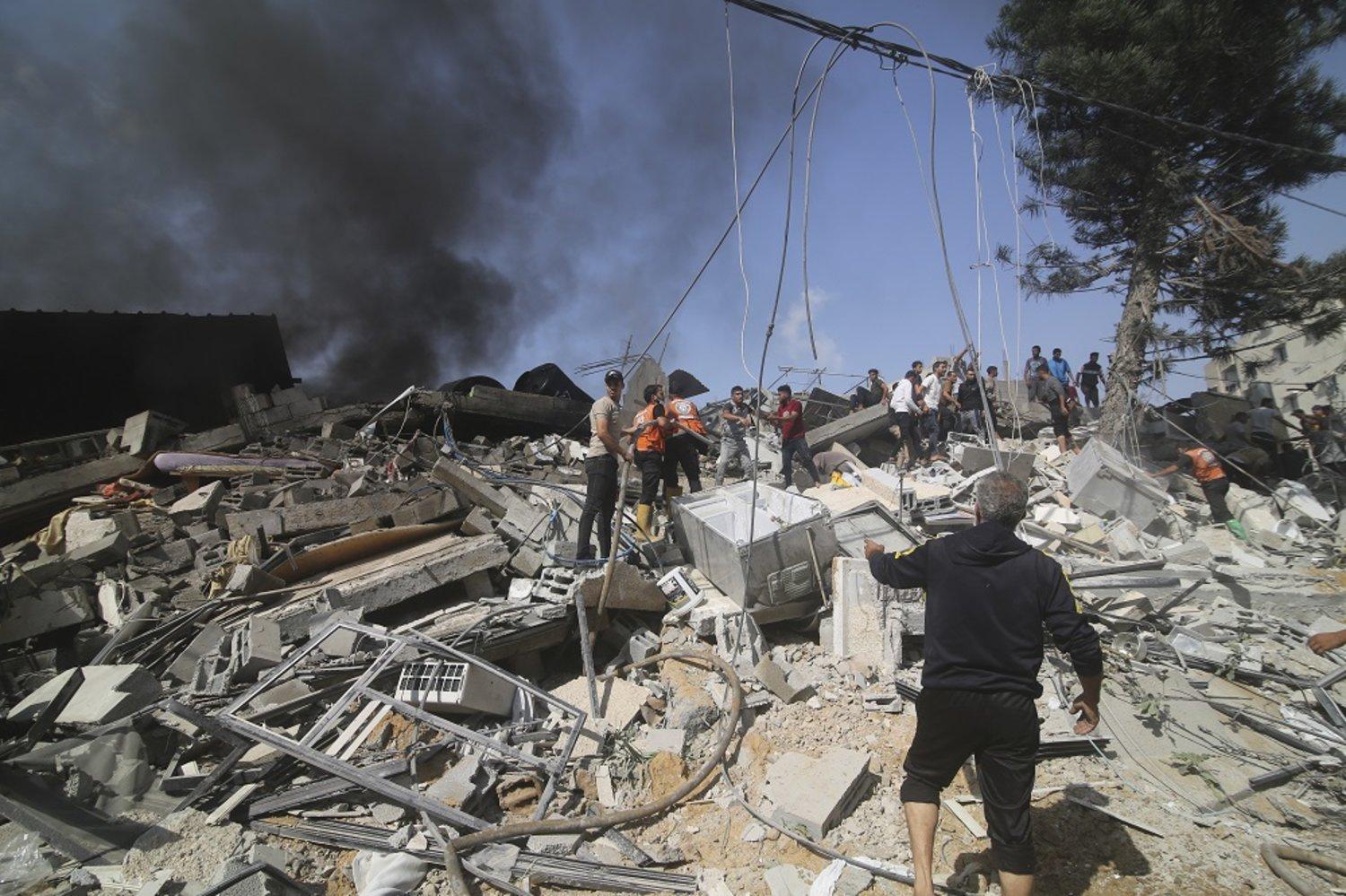How Yemen is inflating Israel’s war cost, by Khalil Harb
By targeting Israel and Israeli-owned vessels, the Yemeni resistance threatens Israel’s trade-based economy and exacts an international cost for Tel Aviv’s devastating war on Gaza.
Despite facing its war-stricken challenges and humanitarian crises, Yemen has consistently demonstrated unwavering support and solidarity with Palestine. In the Arab world, the poorest state in West Asia stands unparalleled in organizing massive pro-Palestinian demonstrations.
However, recent events mark a historic shift, as the Ansarallah-led government, for the first time, has directly engaged in strikes against Israel that originate from the territory of “Happy Yemen.”
The extensive range covered by Yemen’s missiles and drones in their journey toward Israel – exceeding two thousand kilometers – serves as a resounding rebuttal to US attempts to prevent the conflict from becoming a wider West Asian one.
If there were any doubts about Sanaa’s prominent role within the Axis of Resistance previously, they are now unequivocally laid to rest.
Ansarallah answers back
The Yemeni escalation began with an open declaration, transitioning from the stage of mere threats against Washington’s military support in the war on Gaza. It progressed to the launching of missiles and drones towards the city of Um al-Rashrash (Eilat), followed by a strategic shift to naval operations against Israeli-linked vessels, as announced by the Yemeni Armed Forces on 19 November. Notably, this escalation culminated in what is believed to be the first attempt to target a US military ship with missiles.
Since Ansarallah leader Abdulmalik al-Houthi’s warning to the US, Yemen’s resistance activities have intensified, spanning from Um al-Rashrash to the Red Sea, the Bab al-Mandab Strait, and the Gulf of Aden.
This new dimension to the Resistance Axis’ reach creates regional confusion for the US military, which has unabashedly sided with Israel’s assault on Gaza and works to conceal the genocide employed against 2.3 million civilians in the besieged Strip.
The repercussions have reverberated in US political and security recalculations across the entire region. Perhaps most significantly, these actions have compelled the occupation state to reassess its economic losses and the costs of prolonged war.
The latest economic fallout is a notable incident involving the container ship Zim Europe, operated by the Israeli shipping company Zim. Concerned over Yemeni threats against Israel-linked ships, the vessel was forced to alter its course, deviating from its planned route through the Suez-Bab al-Mandab Canal.
Instead, the Zim Europe embarked on a sea journey 56 percent longer, circumnavigating Africa through the Atlantic Ocean and Cape of Good Hope, reflecting the economic and logistical hurdle now faced by Israeli shipping companies.
At the same time, the US Central Command (CENTCOM) reported that “two ballistic missiles were fired from Houthi-controlled areas in Yemen toward the general location of USS Mason (DDG-87) and M/V Central Park.”
This incident occurred in the Gulf of Aden as part of what was described as a rescue mission for the cargo ship Central Park, operated by Zodiac Marine and owned by Israeli billionaire Eyal Ofer.
But what does this mean from a broader perspective?
Global trade disruption
First, Ansarallah in Yemen has positioned itself outside the jurisdiction of any temporary truces declared in Gaza.
Second, if the reports from CENTCOM are accurate, this incident marks the first notable clash between Yemeni forces in Sanaa and US forces. This confrontation gained momentum as the Israeli aggression on Gaza intensified, with Ansarallah claiming the downing of an American MQ-9 Reaper drone in Yemeni territorial waters on 8 November.
Third, the cost of the war is dramatically escalating for Israel. An optimistic calculation in early November was that a year-long war fought solely on the Gaza front would cost Tel Aviv over $50 billion, or 10 percent of Israel’s GDP. That’s an unrealistic figure given that Israel is already engaged on its northern border with the Lebanese resistance, Hezbollah, and has significantly widened its military scope in the occupied West Bank.
Moreover, it does not consider the extraordinary costs associated with disrupting Israeli trade. The occupation state imports and exports nearly 99 percent of goods via waterways and shipping. These imports include much of the country’s food supply, which Israel does not, and cannot, produce.
READ ALSO: Re: Israel-Palestine Conflict: two-state solution or unending war, by Prof MK Othman
Today, according to Foreign Policy magazine, “only Russia’s and Ukraine’s Black Sea ports incur significantly higher war risk premiums than Ashdod [Israeli port] does.” And if Israel’s conflict with Hezbollah escalates, that will take out Haifa’s port too, which the Lebanese resistance targeted in the 2006 war.
All of this has vast international repercussions too. The disruption of commercial traffic between the Suez Canal and Bab al-Mandab doesn’t only apply pressure on Israel: approximately 12 percent of global trade annually, including about 21,000 ships and 6 million barrels of oil per day (9 percent of the total transported by sea), relies on this route.
Bab al-Mandab is a vital link in the trade between East and West Asia and Europe. Um al-Rashrash, strategically located in the Red Sea, plays a key role in this trade movement, connecting Israel to East Asian markets.
The role of this port was strengthened after the signing of the US-brokered normalization agreement with the UAE and Bahrain three years ago, where it was agreed to transport shipments of UAE crude oil to Um al-Rashrash, to be transported through the Eilat-Ashkelon pipeline – that is, from the Red Sea to the Mediterranean Sea.
The recent missile and drone strikes on Um al-Rashrash undermine not just Israel’s security but its economic ambitions, including vital tourism traffic that contributes substantially to its revenue. Tel Aviv’s obscure stance on the “Yemeni front” may stem from a desire to avoid security and political embarrassment resulting from this distant support.
The immediate impact of the Yemeni attack on Israel’s maritime trade is evident in the rapid rise in transportation costs. Israeli ships may need to avoid the Red Sea and Bab al-Mandab altogether, opting for longer routes around Africa or resorting to higher-cost air transport. The fees of insurance companies, especially for Israeli ships or those transporting goods intended for the occupation state, will likely continue to increase.
Israel’s imminent implosion
These economic challenges take on new dimensions, considering the Israeli Ministry of Finance’s estimate that the cost of the war exceeds $270 million per day, with Israel expected to bear a significant portion, in addition to US taxpayers.
READ ALSO: Re: Israel-Palestine Conflict: two-state solution or unending war, by Prof MK Othman
Pre-existing Israeli political and social unrest, coupled with a decline in foreign reserves, forced borrowing, and economic contraction, could substantially damage its economy. The World Bank’s estimation that 34.6 percent of Israel’s GDP depends on trade in goods is a case in point. Tens of billions of dollars in Israeli-Asian trade are also at risk due to the regional disruptions in the Red Sea.
All of this uncertainty adds to other concerns, such as a retreat of investors from risk, a sharp decline (by 70 percent) in the volume of invested capital since last October, and the mass “exodus” of settlers to their countries of origin.
Sanaa’s participation in the Palestinian resistance’s Al-Aqsa Flood operation may also impact the ongoing US-backed, Saudi-led war in Yemen, particularly given unofficial reports of Saudi Arabia intercepting missiles launched toward Israel.
Any hasty US attempt to intervene to protect Israel and confront Ansarallah’s decisions may lead to an increase in aggression against Yemen. This raises questions about the vulnerability of coalition partners, Saudi Arabia and the UAE, to Yemeni missiles once again.
It would also prove how the US and its regional allies are a destabilizing force in West Asia – a force that the Axis of Resistance is effectively countering in the political, military, and economic realms.
Khalil Harb is a Beirut-based journalist and former editor-in-chief of the Lebanese daily Al-Safir. He has also worked for the Associated Press and the Lebanese An-Nahar newspaper. Khalil is a graduate of the American University in Cairo.
Follow the Neptune Prime channel on WhatsApp:
Do you have breaking news, interview request, opinion, suggestion, or want your event covered? Email us at neptuneprime2233@gmail.com





